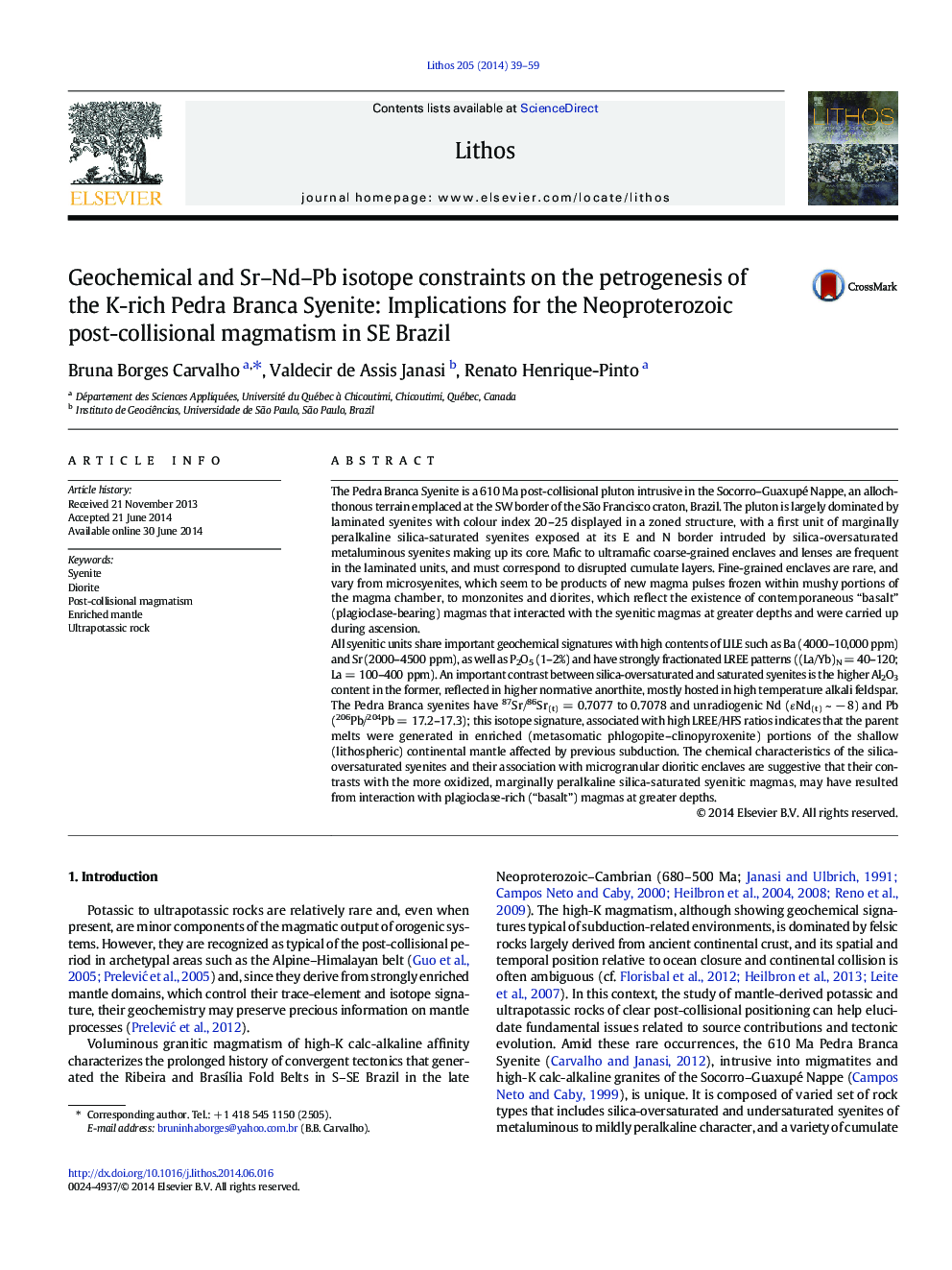| Article ID | Journal | Published Year | Pages | File Type |
|---|---|---|---|---|
| 4715826 | Lithos | 2014 | 21 Pages |
•Zoned pluton from border silica-saturated to later core silica-oversaturated syenites.•Rare dioritic enclaves are exclusive of silica-oversaturated syenites.•Mix with basalt can alter peralkaline saturated to metaluminous oversaturated syenite.•Trace element and Sr–Nd–Pb isotopes indicate enriched lithospheric mantle source.
The Pedra Branca Syenite is a 610 Ma post-collisional pluton intrusive in the Socorro–Guaxupé Nappe, an allochthonous terrain emplaced at the SW border of the São Francisco craton, Brazil. The pluton is largely dominated by laminated syenites with colour index 20–25 displayed in a zoned structure, with a first unit of marginally peralkaline silica-saturated syenites exposed at its E and N border intruded by silica-oversaturated metaluminous syenites making up its core. Mafic to ultramafic coarse-grained enclaves and lenses are frequent in the laminated units, and must correspond to disrupted cumulate layers. Fine-grained enclaves are rare, and vary from microsyenites, which seem to be products of new magma pulses frozen within mushy portions of the magma chamber, to monzonites and diorites, which reflect the existence of contemporaneous “basalt” (plagioclase-bearing) magmas that interacted with the syenitic magmas at greater depths and were carried up during ascension.All syenitic units share important geochemical signatures with high contents of LILE such as Ba (4000–10,000 ppm) and Sr (2000–4500 ppm), as well as P2O5 (1–2%) and have strongly fractionated LREE patterns ((La/Yb)N = 40–120; La = 100–400 ppm). An important contrast between silica-oversaturated and saturated syenites is the higher Al2O3 content in the former, reflected in higher normative anorthite, mostly hosted in high temperature alkali feldspar. The Pedra Branca syenites have 87Sr/86Sr(t) = 0.7077 to 0.7078 and unradiogenic Nd (ɛNd(t) ~ − 8) and Pb (206Pb/204Pb = 17.2–17.3); this isotope signature, associated with high LREE/HFS ratios indicates that the parent melts were generated in enriched (metasomatic phlogopite–clinopyroxenite) portions of the shallow (lithospheric) continental mantle affected by previous subduction. The chemical characteristics of the silica-oversaturated syenites and their association with microgranular dioritic enclaves are suggestive that their contrasts with the more oxidized, marginally peralkaline silica-saturated syenitic magmas, may have resulted from interaction with plagioclase-rich (“basalt”) magmas at greater depths.
Graphical abstractFigure optionsDownload full-size imageDownload as PowerPoint slide
